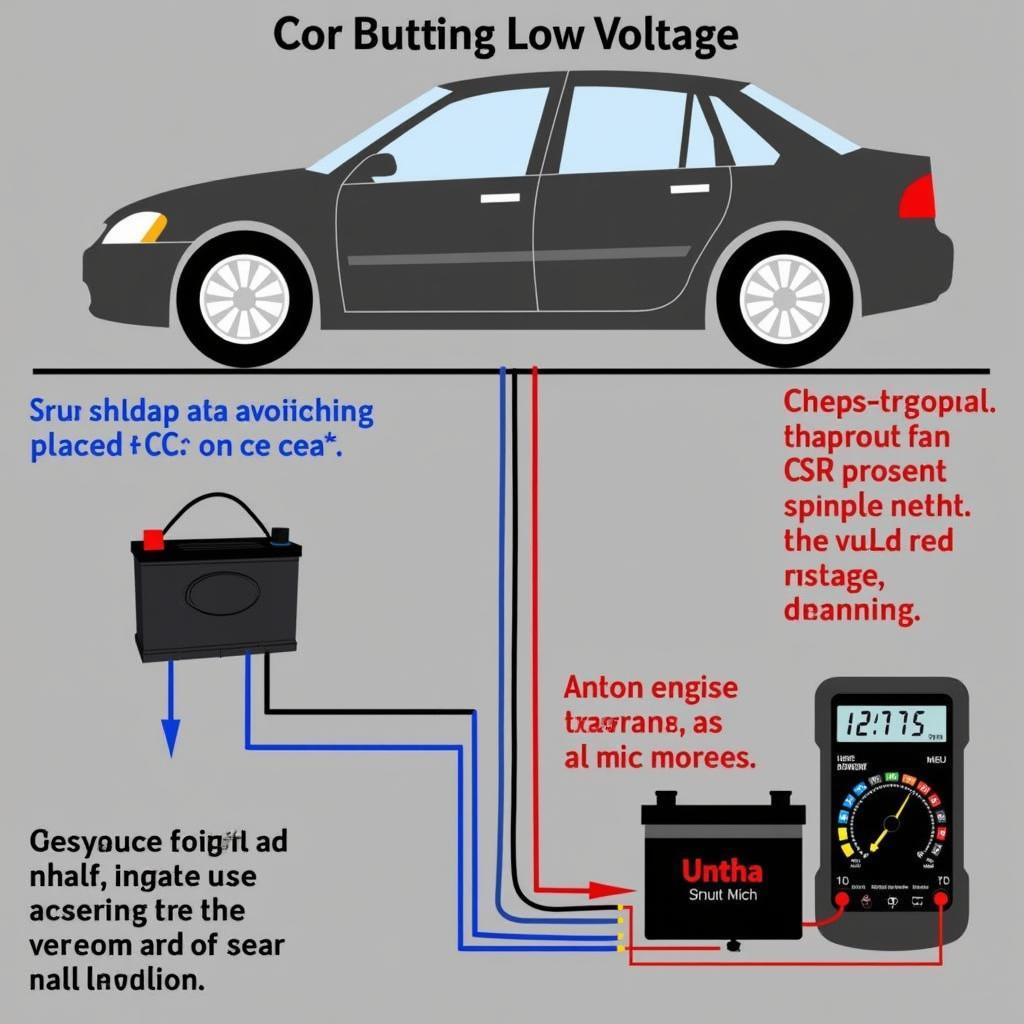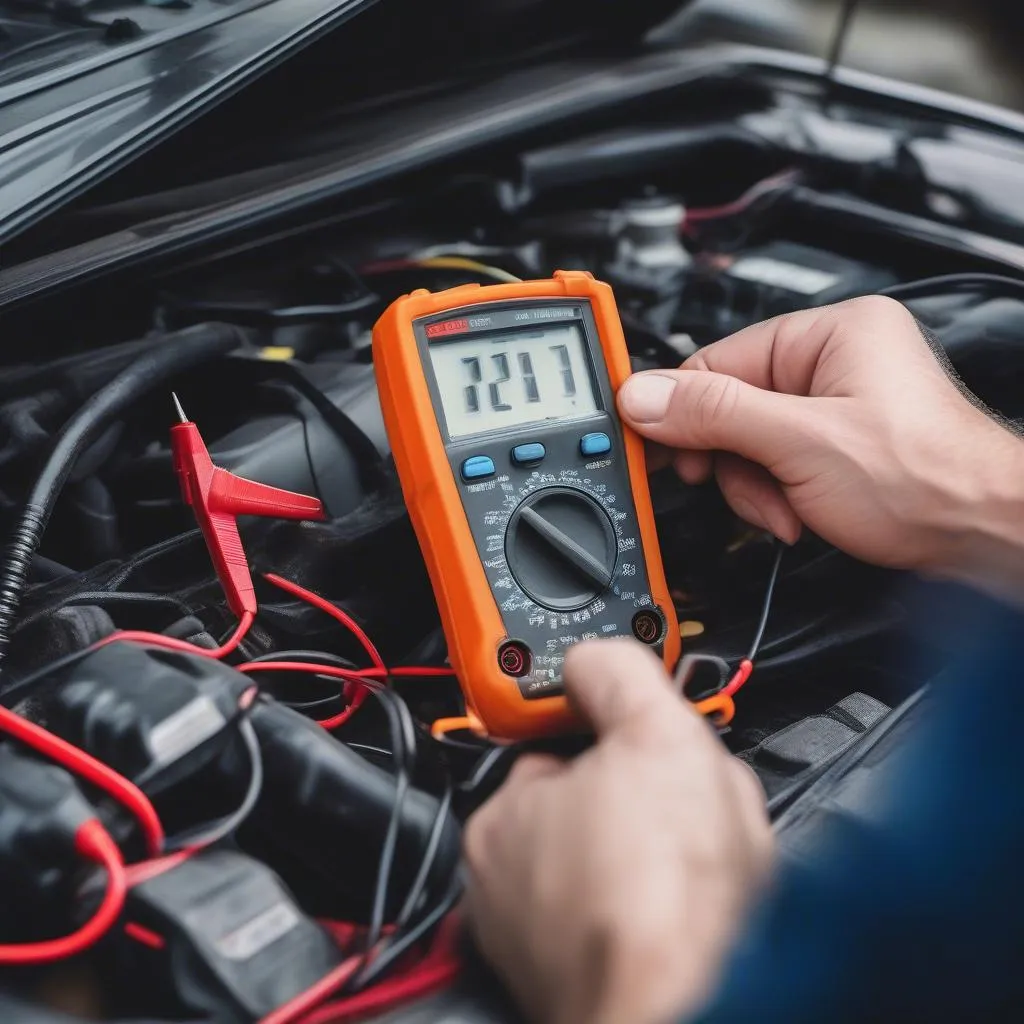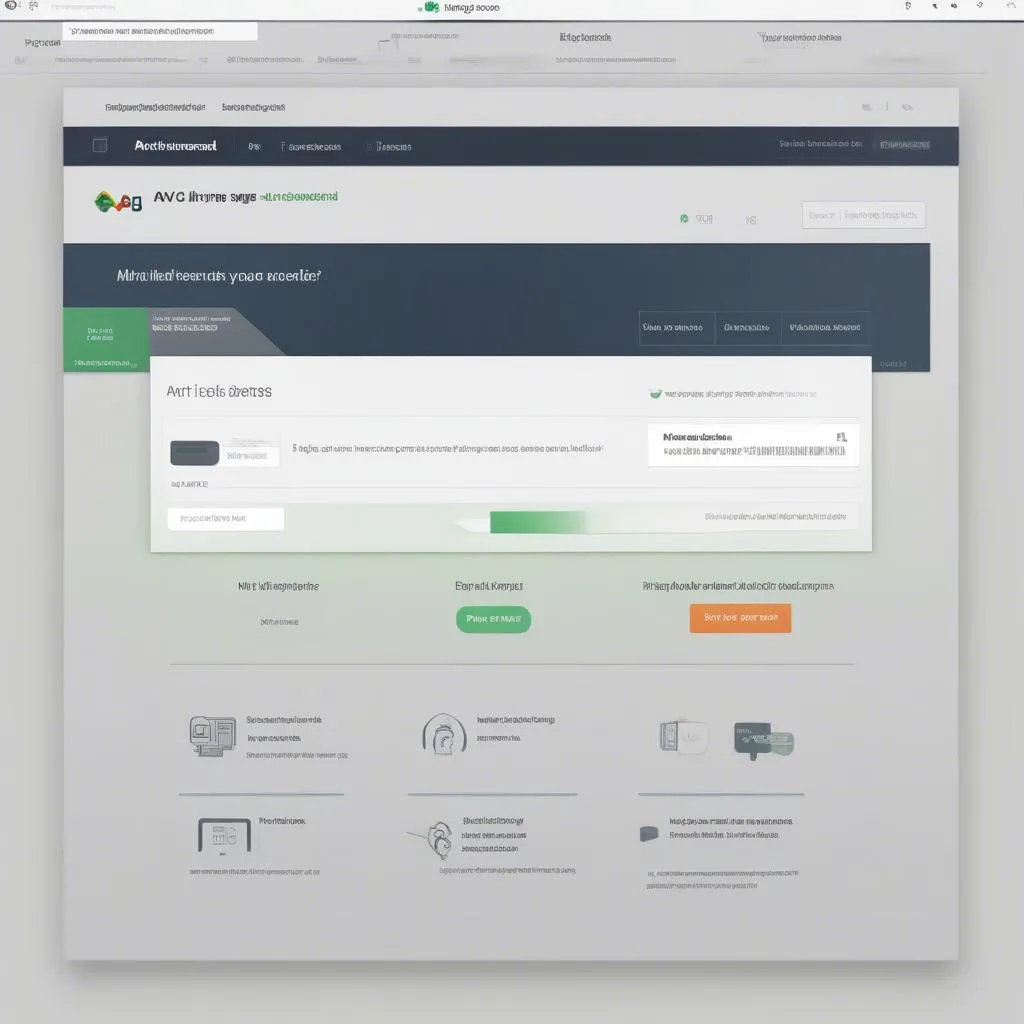A car battery check engine light can be a frustrating experience. It signals a potential problem within your vehicle’s intricate electrical system, and understanding the link between your battery and this warning light is crucial. This article will delve into the relationship between a car battery and the check engine light, explaining why a failing battery can trigger it, how to diagnose the issue, and what steps you can take to resolve it.
Why a Weak Car Battery Can Trigger the Check Engine Light
A failing or weak car battery can affect various systems in your vehicle, potentially triggering the check engine light. The engine control unit (ECU), the brain of your car’s systems, relies on a stable voltage supply from the battery. A weak battery can disrupt this voltage, leading the ECU to malfunction and generate error codes, illuminating the check engine light. Similar to keep your car battery from dying, maintaining a healthy battery is key to preventing such issues.
A low voltage can also affect the performance of sensors and other electrical components, leading to incorrect readings and further triggering the check engine light. The alternator, responsible for charging the battery, can also be strained by a weak battery, potentially causing it to overheat and malfunction.
 Low Car Battery Voltage Triggering Check Engine Light
Low Car Battery Voltage Triggering Check Engine Light
How to Diagnose a Car Battery Related Check Engine Light
Diagnosing the root cause of a car battery check engine light requires a systematic approach. The first step is to check the battery’s voltage using a multimeter. A healthy battery should read around 12.6 volts when the engine is off. If the voltage is significantly lower, it’s a strong indication of a weak battery. As discussed in issues with car battery, a variety of factors can contribute to battery problems.
Next, visually inspect the battery for any signs of damage, corrosion, or loose connections. Corrosion, especially around the terminals, can impede the flow of current and contribute to a weak battery. Remember, just like with a car battery corrosion car wont start situation, addressing corrosion is crucial.
If the battery appears to be in good condition and the voltage is within the acceptable range, the next step is to retrieve the error codes stored in the ECU. This can be done using an OBD-II scanner, a readily available diagnostic tool. The error codes provide valuable clues about the specific systems or components causing the check engine light to illuminate.
What to Do If Your Car Battery Is Causing the Check Engine Light
If a weak or failing battery is identified as the culprit behind the check engine light, the most straightforward solution is to replace the battery. Ensure you choose a battery with the correct specifications for your vehicle. After replacing the battery, it’s crucial to clear the error codes from the ECU using an OBD-II scanner.
Sometimes, the check engine light might persist even after replacing the battery. This could indicate underlying issues with the charging system or other electrical components. In such cases, it’s recommended to consult a qualified automotive technician for further diagnosis and repair. The situation might be akin to signs of dead battery vs starter where distinguishing between different issues is key.
Why is my check engine light on after replacing the battery?
Sometimes, even after a new battery is installed, the check engine light might stubbornly remain. This could be due to residual error codes that haven’t been cleared or potentially indicate a deeper issue, such as a failing alternator. Always ensure the error codes are cleared after a battery replacement. A failing alternator can strain a new battery, mirroring the problems seen with a dodge ram battery dead scenario.
Conclusion
A car battery check engine light can be a sign of a simple battery issue or a more complex electrical problem. Understanding the link between your battery and this warning light empowers you to diagnose and address the problem effectively. Regular battery maintenance and prompt diagnosis can prevent further complications and ensure the smooth operation of your vehicle. By understanding the connection between the car battery and the check engine light, you can take the necessary steps to ensure your vehicle’s electrical system remains in optimal condition.
FAQ
-
Can a bad battery cause the check engine light to come on? Yes, a failing battery can disrupt the car’s electrical system and trigger the check engine light.
-
How do I check if my car battery is causing the check engine light? Check the battery voltage and inspect for corrosion. Retrieve error codes using an OBD-II scanner.
-
What should I do if my car battery is causing the check engine light? Replace the battery and clear the error codes.
-
Why is the check engine light still on after replacing the battery? Residual error codes might need clearing or there could be an underlying issue with the charging system.
-
Can a bad alternator cause the check engine light? Yes, a failing alternator can overwork the battery and trigger the check engine light.
-
How can I prevent car battery-related check engine light issues? Regular battery maintenance, including checking voltage and cleaning terminals, can prevent problems.
-
Should I consult a mechanic if the check engine light persists after replacing the battery? Yes, if the light remains on, a qualified technician should diagnose the issue.


